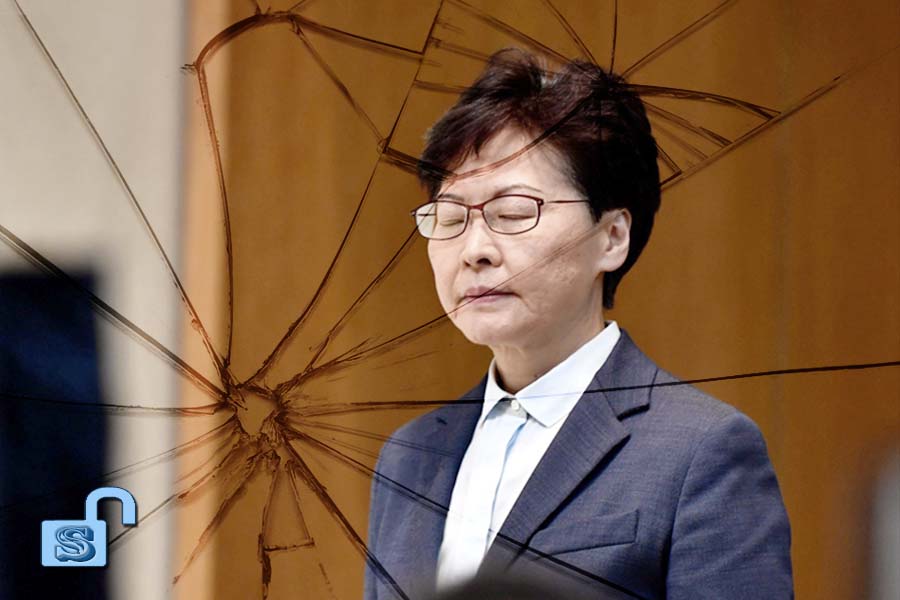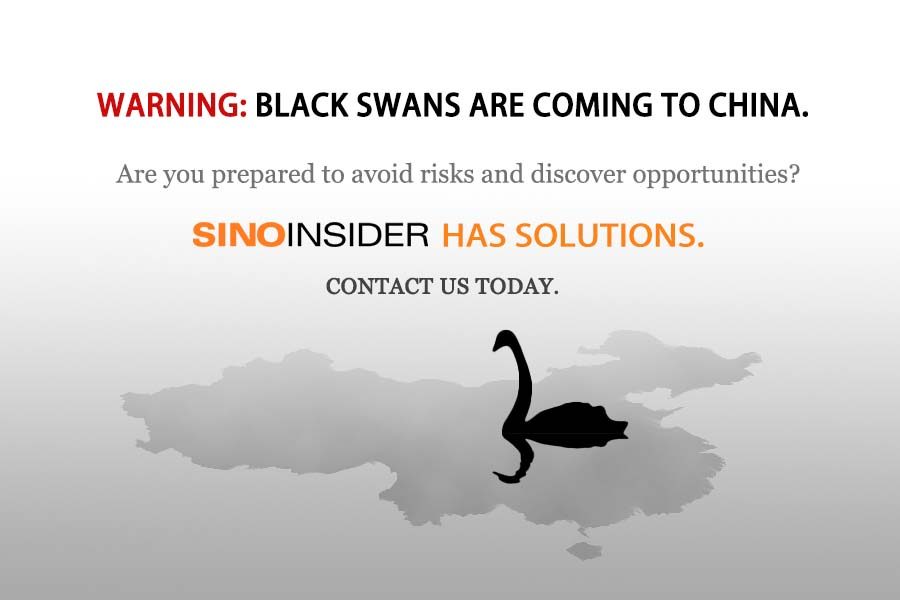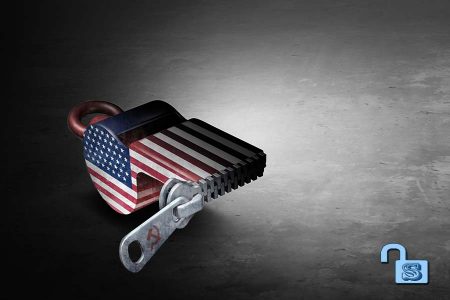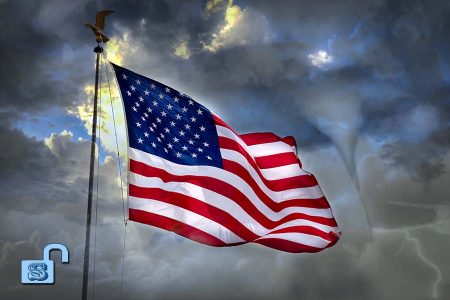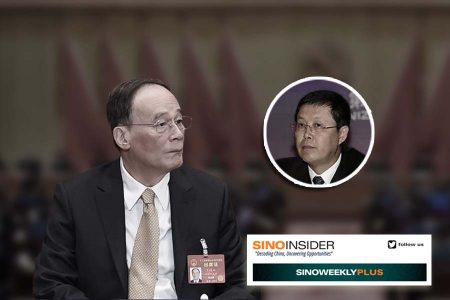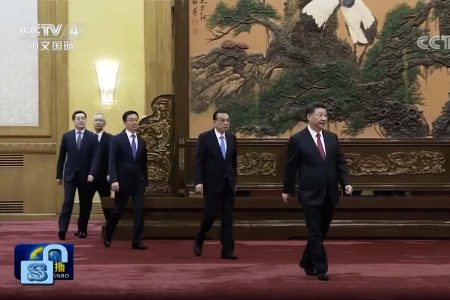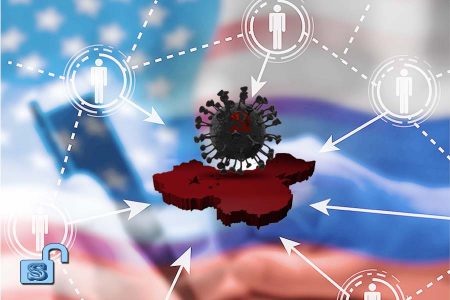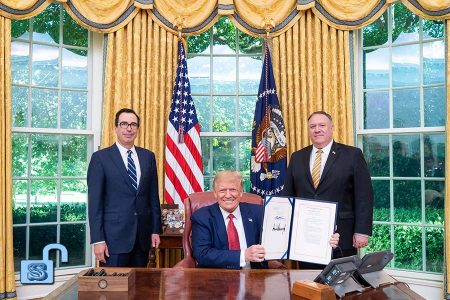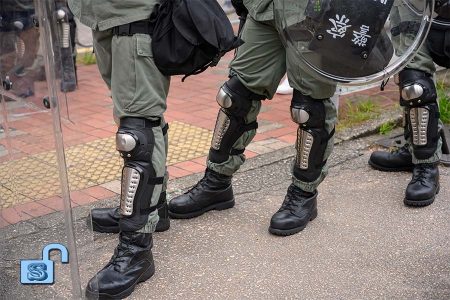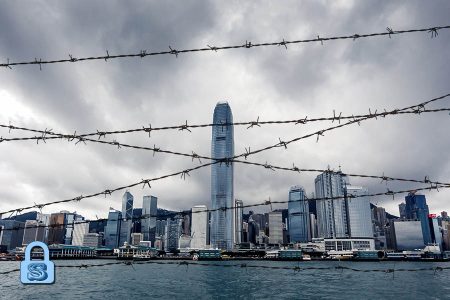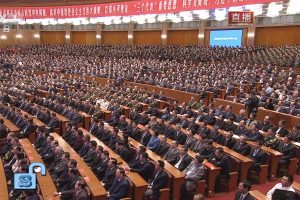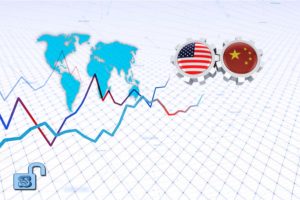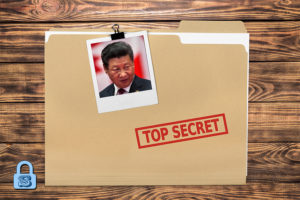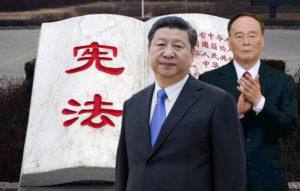◎ The CCP’s goal of “advancing to retreat” is to calm things down in the city and focus its energies instead on other pressing matters, such as the Sino-U.S. trade war and the 2020 Taiwan presidential election.
Updated on Aug. 25, 2019.
A clearer picture of the Chinese Communist Party’s plans for handling the Hong Kong protests has emerged in light of several developments over recent days and weeks.
We look at how the CCP would ideally wish to resolve the Hong Kong issue, the implications of the CCP’s decision for Hong Kong leader Carrie Lam and the Hong Kong police force, as well as how Hong Kong is affecting the Sino-U.S. “Battle of Waterloo.”
‘Advancing’
In recent weeks, the world has come to believe that the People’s Republic of China is serious about sending military or paramilitary forces into Hong Kong to suppress the protests. Several developments strengthen this widely accepted believe:
1) Shortly after the mass marches and protests began in June, photos of military or paramilitary vehicles driving through neighboring Shenzhen were circulated on social media.
2) In July, rumors circulated that Beijing was preparing to impose martial law in Hong Kong.
3) In late July and August, PRC organs that oversee Hong Kong affairs used tough language to describe instances of violence by protesters (“near terrorism”) and to describe the protest movement as a whole (“color revolution”).
4) In early August, the People’s Liberation Army Garrison in Hong Kong released a video showing anti-riot drills.
5) Near mid-August, many news outlets reported that thousands of People’s Armed Police troops were in Shenzhen. The troops and their vehicles were housed in a Shenzhen sports stadium where they carried out training exercises. International news outlets carried satellite and regular photos featuring the paramilitary vehicles and troops. State media shared videos of the paramilitary vehicles rolling through Shenzhen.
6) In mid-August, the People’s Liberation Army Ground Forces of the Eastern Theater Command posted on its official social media account that it will take “only 10 minutes” to travel from Shenzhen to Hong Kong.
7) In mid-August, PRC state media depicted the Hong Kong protesters as “cockroaches” in an article and a cartoon. State media also bought ads on Twitter which depicted the Hong Kong protests and protesters in a negative light.
8) On Aug. 13, United States President Donald Trump tweeted: “Our Intelligence has informed us that the Chinese Government is moving troops to the Border with Hong Kong. Everyone should be calm and safe!”
9) On Aug. 14, a Taiwanese media outlet reported “exclusive” news that Beijing will declare Hong Kong a Chinese municipality if the Hong Kong government cannot restore order in the city. The media outlet also listed the ways in which Beijing will reorganize Hong Kong’s government, financial, police, and education system after scraping the “one country, two systems” model.
10) On Aug. 15, overseas Chinese language media reported that about 20 military trucks carrying troops from the PLA Garrison in Hong Kong were spotted driving through the city’s central business district.
Based on our analysis of the Hong Kong situation and long-term research into the CCP, we believe that the Party has decided on the strategy of “advancing to retreat” (以進為退) on Hong Kong. The “advancing” part of the strategy is convincing the world that the PRC will deploy troops into Hong Kong for another Tiananmen-style crackdown at a moment’s notice. The “retreat” involves “meeting” the demands of the Hong Kong protesters in a backhanded way in the hopes that public anger will die down and the city will return to normalcy. The CCP’s goal of “advancing to retreat” is to calm things down in the city and focus its energies instead on other pressing matters, such as the Sino-U.S. trade war and the 2020 Taiwan presidential election.
One has to stand in the CCP’s shoes to understand why it would use an “advancing to retreat” strategy. On the one hand, military or paramilitary action in Hong Kong will definitely allow the PRC to “maintain stability” and tighten its grip on the city after months of unrest. On the other hand, the negatives of military/paramilitary intervention far outweigh the positives:
1) Many CCP elites and foreign companies have vast interests parked in Hong Kong. Military/paramilitary intervention will drive away foreign capital from both Hong Kong and the mainland, while the CCP elites stand to lose big when the United States and the world come to a consensus that Hong Kong is no longer autonomous.
2) Military/paramilitary intervention in Hong Kong could invite strong pressure and sanctions from the U.S., as well as unite the world against the PRC at a time when China’s economy is quickly worsening and its financial problems are in danger of blowing up.
3) The CCP wants to show mainland Chinese and the world that “all’s well and good” in the regime when it commemorates the 70th anniversary of the PRC’s founding on Oct. 1. Having unending protests in Hong Kong upsets the CCP’s narrative and casts a shadow on the celebrations.
4) The CCP wants to focus its efforts on influencing and interfering in the Taiwan presidential election scheduled for January 2020.
5) The CCP also has plans to reunify the Republic of China with the People’s Republic of China within the next decade via peaceful means, including under the “one country, two systems” framework. Military/paramilitary intervention in Hong Kong will virtually doom the PRC’s reunification charm campaign in Taiwan and could leave the military option as the only viable method to reunify the ROC with the PRC before 2030.
6) The CCP’s “you die, I live” factional struggle is an important factor in shaping how Beijing deals with the Hong Kong protests. We previously wrote that Xi Jinping’s political rivals will be in favor of Xi ordering a Tiananmen-style crackdown in Hong Kong because that would compromise Xi and swing the factional struggle back in their favor (see here and here); denying his rivals the edge in the factional struggle would also be one of Xi’s top priorities when considering solutions to subdue Hong Kong. Recent information about discussions on how to handle Hong Kong among the CCP elite at Beidaihe appear to corroborate our analysis; Xi had reportedly decided not to deploy troops to Hong Kong “at the present time.”
‘Retreat’
While Beijing may have ruled out a military crackdown in Hong Kong, there are benefits to threatening a crackdown as part of a classic CCP psychological warfare operation. The CCP psyop is designed primarily to intimidate the Hong Kong people into ending the protests out of fear of provoking another Tiananmen massacre. The CCP psyop also targets the international community; as we wrote in the Aug. 15 edition of our newsletter, “those who fear a crackdown in Hong Kong would either try to pressure the protesters into surrendering or find ways to compromise with the CCP to prevent a crackdown.”
The last several weeks have seen the CCP use its “military intervention” psyop to give the impression that it is “advancing” on the Hong Kong protesters and will give no quarter. In recent days, however, several developments have emerged which indicate that the CCP’s real purpose of “advancing” is to “retreat” on Hong Kong:
1) On Aug. 17, Ronny Tong Ka-wah, a non-official member of Hong Kong’s Executive Council and former pro-Beijing lawmaker, said that his think-tank and political group Path of Democracy has proposed establishing a “truth and reconciliation commission” (真相和解委員會) to look into protester demands. Protesters are calling for an independent commission (獨立調查委員會) to investigate the Hong Kong police’s use of force against protesters.
2) In the afternoon of Aug. 18, hundreds of thousands of Hong Kong protesters held a police-approved rally in Victoria Park. Despite not getting a permit to hold a march, the protesters, who numbered 1.7 million according to organizer estimates, later carried out a peaceful march through Hong Kong’s business district. Later in the evening, some protesters vandalized government buildings and aimed laser beams at police officers. However, the police did not use violence to turn away the rowdy protesters or tried to stop the earlier march.
3) On Aug. 19, former Hong Kong justice secretary Elsie Leung Oi-sie said in a radio program that a “color revolution” has not yet arrived in Hong Kong although “some actions” by the protesters are “quite close to subversion.” But “there has yet to be an attempt to topple the Chinese government or the Hong Kong government,” said Leung. In referring to an incident where protesters vandalized the PRC emblem on the Hong Kong Liaison Office in July, she said that “insulting the national emblem and the national flag is indeed challenging the central government’s authority but all these are petty actions that will not really affect Hong Kong’s security.”
Leung’s downplaying of the PRC reaction to the protests is significant because she is a top Beijing advisor and a founding member of a pro-Beijing political party in Hong Kong.
4) At 7:30 a.m. Hong Kong time on Aug. 20, the South China Morning Post published an interview with Hong Kong’s Independent Police Complaints Council (IPCC) head Anthony Neoh. Neoh said that he did not rule out an independent commission of inquiry (COI) into the Hong Kong police’s use of force against the protesters. “Don’t shut the door, but be very careful in doing it,” he said. Neoh also said that he advised Hong Kong Chief Executive Carrie Lam to offer a political solution to the protests, and described the protesters’ demand that Lam’s government formally withdraw a controversial extradition bill as “eminently reasonable.”
At 10:30 a.m., pro-democracy Hong Kong lawmaker Lam Cheuk-ting held a press conference with the two sons of a 62-year-old man who was tortured by the Hong Kong police on June 26. The man, a Mr. Chung, was arrested on June 25 for assaulting a police officer when under the influence of alcohol and was sent to a psychiatric ward in Hong Kong’s North District Hospital. During the press conference, Lam and Mr. Chung’s sons held up photos of Mr. Chung’s torture wounds, and played a hospital surveillance video clip of the torture. Earlier, the police had dismissed the torture allegation, citing a lack of evidence. It is unclear why the surveillance clip of Mr. Chung’s torture only surfaced now.
In the morning of Aug. 20, Hong Kong leader Carrie Lam held a press conference where she promised “a platform for dialogue with people from all walks of life.” She also pledged to launch “an important fact-finding study in addition to a very robust system to investigate and look at the complaints against police over this prolonged period of confrontation and violence.”
At first glance, there appears to be no direct link between the press conference on Hong Kong police torture, the head of Hong Kong’s IPCC talking about setting up a COI to look into the police’s use of force during the Hong Kong protests, and Carrie Lam’s remarks. All three events, however, have one thing in common—Hong Kong police violence and the need to investigate complaints. We have reason to believe that the CCP is preparing to indirectly “give ground” on investigating the Hong Kong police, a key protester demand, in the hopes of calming the protesters.
5) On Aug. 20, pro-Beijing lawmaker and businessman Michael Tien told Bloomberg Television that the “next 10 days is a golden window.” If Hong Kong “wants to avoid any central government intervention during the month of September, this is a perfect time for Carrie Lam to think about addressing some of the five demands.”
Tien’s remarks represent pressure from Party Central and the Hong Kong business community on Lam to quickly resolve the Hong Kong situation.
‘Advancing to Retreat’: Implications for Hong Kong
The CCP will never admit to its mistakes or offer concessions; if the CCP does admit to something, the real situation is almost certainly far worse than what has been confessed.
Should the CCP find the need to reverse its position on a mistake or make concessions, it will do so in a manner that gives the impression that Party Central is consistently hardline and will maintain its “bottom line.” As seen in the previous section, the CCP appears to be using proxies to send a message to the Hong Kong protesters that their demand on inquiring into police brutality and withdrawing the extradition bill will be met by the Hong Kong government. It is also not beyond the CCP to find ways to give Hong Kong universal suffrage and “greater freedoms” while concurrently tightening its control over the city and not giving up anything in essence.
It becomes tricky for the CCP to meet the protesters’ call for Carrie Lam to step down and not look like it caved. However, the CCP is completely capable of utilizing controversial and drastic methods to achieve its agenda. In our Aug. 15 article, we wrote that “Carrie Lam and the undercover CCP security forces in the city are all at risk of being ‘taken out’ (sudden health problems resulting in incapacitation and/or death, etc.) as the CCP seeks to appease the protesters without giving the impression that it has made concessions.” We believe that Lam will receive more and more pressure from the CCP via various channels and interest groups in Hong Kong, including from pro-establishment figures and the business community, to resolve the protests. We also believe that unless Carrie Lam openly resigns, she is at high risk of being “taken out” one way or another as the CCP makes sacrifices to resolve the Hong Kong situation without losing face.
Ultimately, the CCP is taking a gamble with its “advancing to retreat” strategy. The CCP is likely betting that things could calm down in Hong Kong when the Hong Kong government make gestures and take actions which give the impression that it is “sincerely listening to and addressing” the five demands of the protesters. In reality, the Hong Kong government would at best be making faux concessions similar to Carrie Lam’s declaration on July 8 that the extradition “bill is dead.”
‘Advancing to Retreat’: Implications for Sino-US Relations
The CCP’s “advancing to retreat” strategy on Hong Kong appears to have worked in its favor in somewhat negating the growing U.S. pressure on the PRC.
As seen in the “Advancing” section, the CCP has successfully created the impression that it will deploy troops to Hong Kong to carry out a Tiananmen-style crackdown if needs must. Judging from the Trump administration’s recent Hong Kong moves, including President Trump tweeting about PRC troop movement at the Hong Kong border and his and Vice President Mike Pence’s attempt to tie the signing of a trade deal with the Hong Kong situation, it seems that the administration has fallen for the CCP’s bluff and is now finding “ways to compromise with the CCP to prevent a crackdown.” It may not be a coincidence that Trump suddenly delayed new tariffs on some Chinese goods from September to December on Aug. 13, the same day that he tweeted about PRC troop movement and when U.S. Secretary of State Mike Pompeo met with top CCP diplomat Yang Jiechi in New York. It also does not seem to be a coincidence that Trump’s top external China advisor suddenly started blaming U.S. “super hawks” for trying to ruin a Sino-U.S. trade deal, or the resurfacing of rumors that Pompeo, whom PRC state media has viciously attacked for his hardline stance on China, could be running for a Senate seat in 2020.
In Sino-U.S. relations, the CCP’s top priorities are surviving and undermining the Trump presidency. To achieve those goals, the CCP will look to turn Trump’s attachment to the trade deal against him using delaying tactics and other more nefarious measures. Concurrently, the CCP will find ways to marginalize the hawkish voices in the U.S. and stop them from influencing the Trump administration. It is not hard to imagine that the CCP could have recently offered the following quid pro quo: In exchange for not cracking down on Hong Kong, the Trump administration should curb or ignore the so-called “super hawks” who want a “color revolution” in Hong Kong and regime change in China. By sidelining the “super hawks,” the Xi leadership can in turn convince the CCP “hardliners” that the U.S. does not want regime change and only wants a trade deal. And if Xi can sway his “hardliners,” a Sino-U.S. trade agreement is well within reach.
From the Trump administration’s perspective, agreeing to the above quid pro quo seems like a win for the U.S. and a no-brainer deal. But in the larger scheme of things, the CCP would have stolen a crucial march in the Sino-U.S. “Battle of Waterloo”—unless the Trump administration suddenly realizes what is going on and reverses course.
Conclusion
The CCP will do anything to survive and dominate, including making the unlikeliest of compromises and concessions. However, the CCP also does not want to lose face. To achieve both conditions, the CCP is willing to sacrifice its pawns. Thus, the protesters in Hong Kong may yet get their demands, but Hong Kong’s leader and police force are at high risk of being sacrificed to preserve the CCP’s face.
The CCP’s “advancing to retreat” strategy on Hong Kong also gives it a chance to turn the tables on the United States. Going forward, the Trump administration faces increasing political risk unless it sees through the CCP’s strategy and changes course.
Our analysis above is based on what the CCP’s ideal scenario for Hong Kong could look like. We believe that there is a low probability that the CCP will attain its ideal scenario given the unpredictable nature of the Hong Kong protest movement and the Trump administration.
